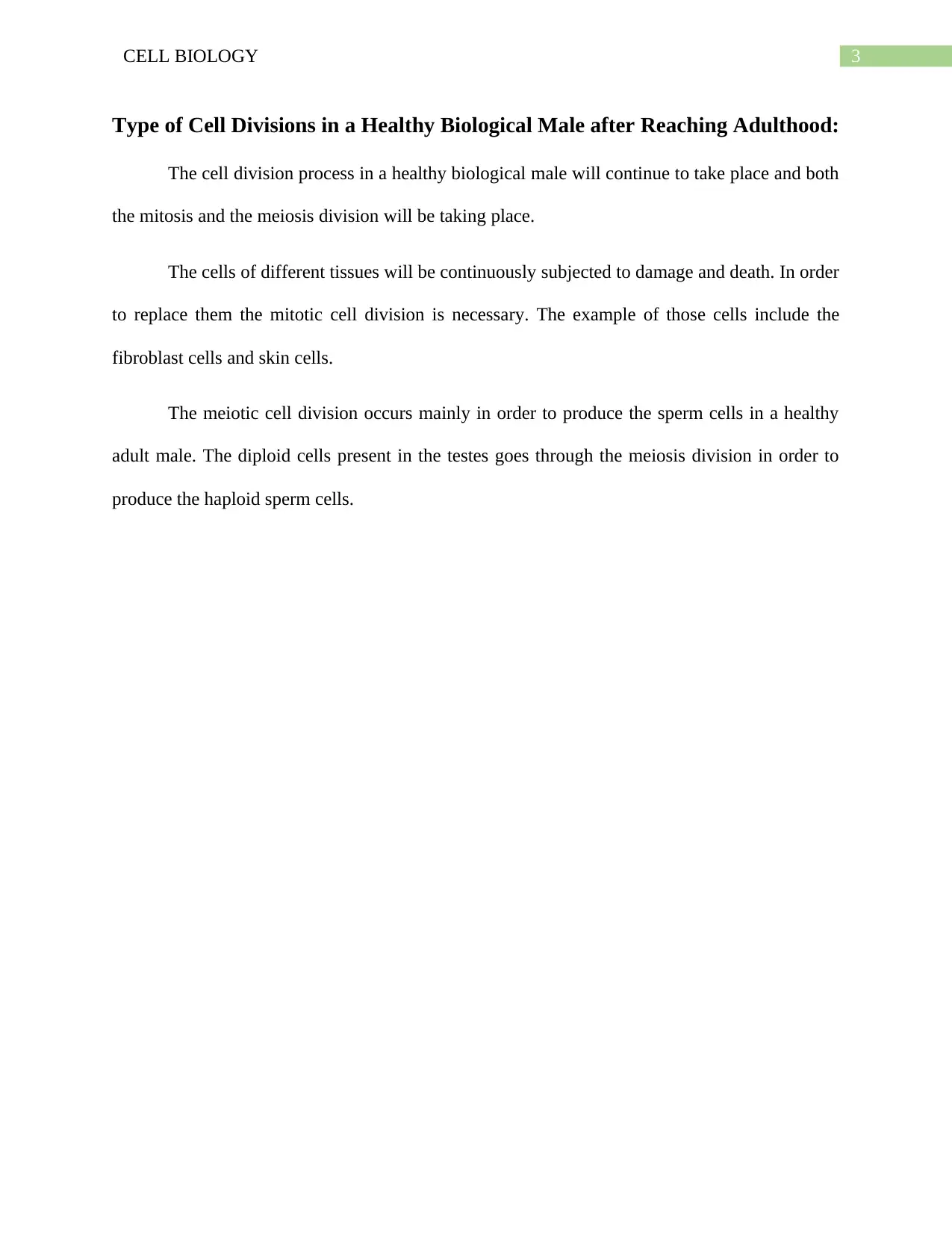Cell Biology Assignment: Cell Structure, Function, and Processes
VerifiedAdded on 2022/08/26
|4
|616
|27
Homework Assignment
AI Summary
This assignment explores key concepts in cell biology. It begins with a detailed examination of the structure and function of various cellular components, including phospholipids, glycoproteins, and cholesterol, and the role of hydrophilic channels and channel proteins. The assignment then analyzes the movement of water and oxygen across the alveoli membrane, detailing the processes of osmosis and simple diffusion. Finally, it addresses the types of cell divisions, specifically mitosis and meiosis, that occur in a healthy biological male after reaching adulthood, explaining their roles in tissue repair and sperm production. The assignment provides a comprehensive overview of these fundamental biological processes.
1 out of 4











![[object Object]](/_next/static/media/star-bottom.7253800d.svg)